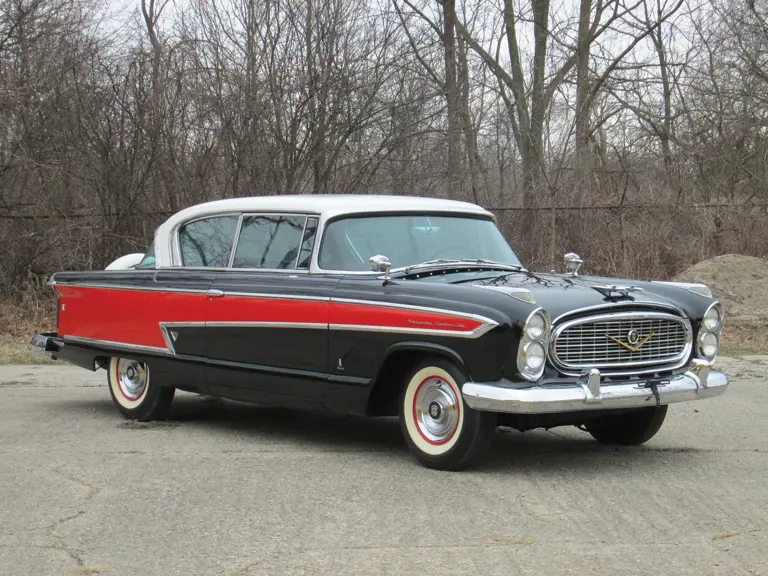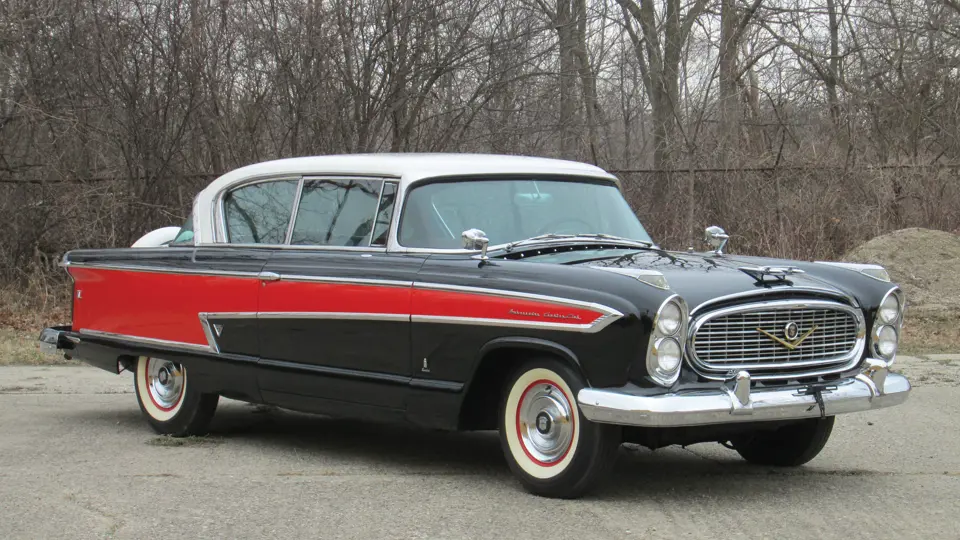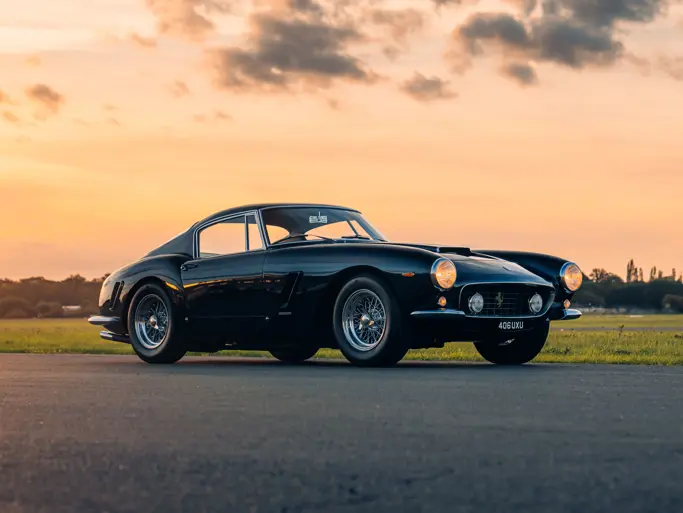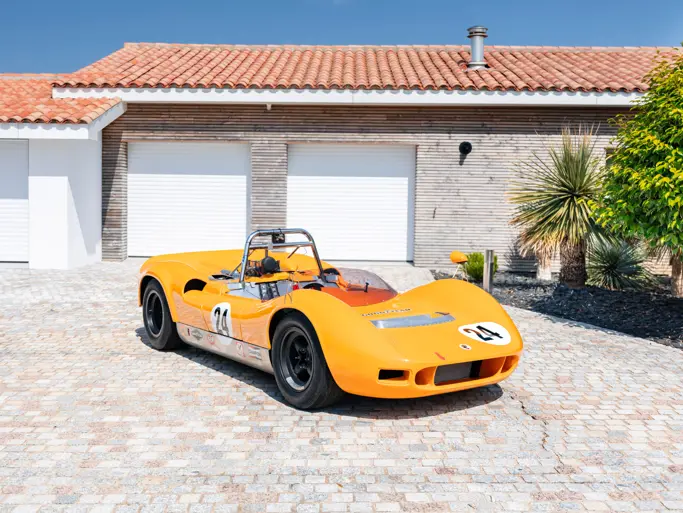 | Auburn, Indiana
| Auburn, Indiana
The Nash Ambassador received its last complete restyle in 1952 that carried over into 1954 almost unchanged. The Golden Anniversary Nash Airflyte, styled by Pinin Farina, received several prestigious design awards. Due to materials restrictions caused by the Korean War, Nash sales, like those of many other carmakers, dropped off sharply in 1952. With the end of the War, a battle for market leadership began between two historic rival automakers. The 1954 sales war between Ford and Chevrolet meant both divisions were shipping vehicles to their respective dealers no matter if there were any orders for them. Ford and GM dealers were often larger with stronger finances and they offered deep discounts to sell these cars. This caused a severe sales toll on all the independent carmakers (Hudson, Kaiser, Packard, Studebaker), and Nash was no exception.
Airflyte styling entered its final season with the heavily facelifted 1955 versions, created under the direction of Edmund E. Anderson. "Scenaramic" wraparound windshields accompanied an entirely new front end treatment, which showed more front wheel than Nash had revealed since the 1949 models debuted. Ambassadors were now available with a V-8 engine for the first time, supplied by Packard, and mated to Packard's Ultramatic automatic transmission.
In 1954 the Nash Ambassador was the first American automobile to have a front end, fully integrated heating, ventilating and air conditioning system. The heating and ventilation system was called Weather Eye and now could be equipped with Nash-Kelvinators' advanced automobile air conditioning unit. While other manufacturers in America at the time offered air conditioning on some models, their air conditioning units were driven by a large and heavy, trunk-mounted expander and heat exchanger that carried the air into the car via clear plastic tubes and out through ceiling mounted vents.
Nash's unit was inexpensive, compact, fit under the hood and could either circulate fresh or recycled air. With a single thermostatic control, the Nash passenger compartment air cooling option was described as "a good and remarkably inexpensive" system. The option was priced well below systems offered by other carmakers (in 1955, Nash offered it at U.S. $345, against $550 for Oldsmobile or $570 for Chrysler other makers, such as Ford, did not even offer optional air conditioning and at this time, even a heater was not always standard equipment.
Nash-Kelvinator merged with ailing Hudson Motor Car Company as of January 14, 1954 to form American Motors Corporation (AMC), and both Nash and Hudson dealers sold Ramblers that were identical, save for the "Nash" or "Hudson" badging. Although the "senior" Nash and Hudson models continued to be marketed, it was sales of the Rambler that were powering the company's bottom line. As the compact Rambler's fortunes increased, sales of the senior Nash cars, including the Ambassador, plummeted.
Nash models fielded for 1956-1957 were heavily restyled in the rear, and offered in a variety of two- and three-tone color schemes. The 1957 models were the first cars to come equipped with "quad" headlights as standard equipment.
The final Nash Ambassador rolled off the Kenosha, Wisconsin, production line in the summer of 1957. Nevertheless, the Ambassador - as a top of the line model name - would continue to exist under Rambler and AMC brands through 1974.
This 1957 Nash Ambassador Custom Country Club Hardtop was sold new by Brooks and Thomas in Columbus, Georgia. The first owner was a Mr. C.W. Pittman who paid 4,638 for this special car, minus the cost of his trade-in, which was quite expensive for the time. The purchase of the car is well-documented on the original sales agreement, the original warranty card, the original service policy and the original purchase receipt - all of which are still with this car today.
This Nash is a well-equipped example with many desirable factory and period accessories and options. Some of the options include factory air conditioning, Continental kit, power windows, dual rearview mirrors and the seats fold down to convert the car into a bed.
This vehicle is designed by the Italian designer Pinin Farina, and the car wears the Farina tags on its lower cowl.
Upon close inspection, this car is very well-preserved and shows no signs of damage, repair or neglect. The chassis, floorpans, sills and inner fenders, exhibit no signs of damage, rust or repair. The doors, hood and trunk fit the body with proper alignment and even margins.
In recent years, this car was treated to a comprehensive restoration and today remains in excellent overall condition. The tri-toned paint shows extremely well with no signs of aging or wear. The chrome and stainless trim items are like new. The interior was replaced with the correct, matching, tri-tone pattern and is also like new including all of the seats, door panels, headliner, carpets, etc. The folding bed assembly all works and the front seats adjust forward and fold flat as they should. The trunk is extremely clean and well-detailed. The engine bay is extremely clean and was restored at the time of restoration and today also presents extremely well.
Mechanically, the car runs and drives well. The large 327-cid, 225-hp V-8 engine powers the car effortlessly and the automatic transmission shifts smoothly. It was recently treated to new brakes. The car’s lights, gauges and horn work as they should and all of the power windows work. The air conditioning system appears to work fine and blows cool air through the vents.
These late 1950s era Nash Ambassadors are quite rare; reliable sources indicate that less than 1,000 of this model were built in 1957. To find one with this history and virtually all of the factory options makes this car even more special.





